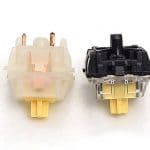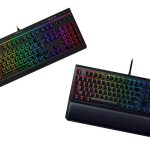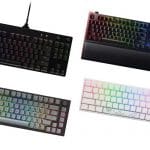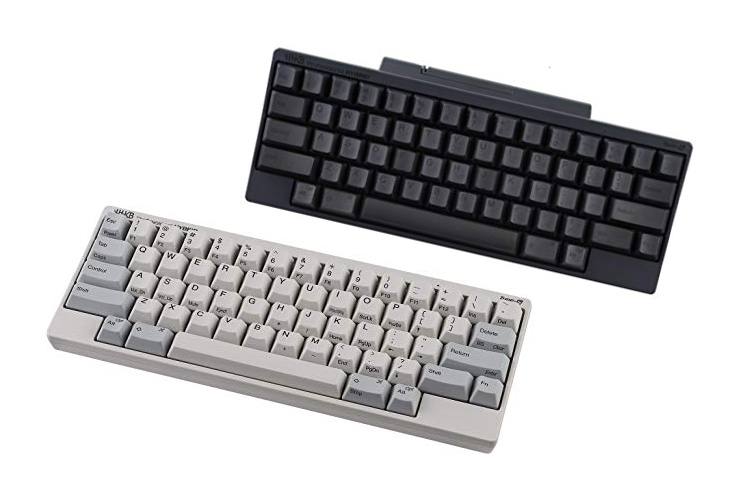
Mechanical key switches have become one of the most popular keyboard switch technologies in the market. However, most consumers these days might not know that there are tons of other keyboard switch technologies out there. Some of them are even well-loved by smaller communities of enthusiasts. One of those is the capacitive key switch technology.
Capacitive keyboards first came out in the 80s and aimed to provide consumers with a different kind of typing experience. They work through the assistance of the changes in capacitance that are redirected to its capacitive pads. They rely more on electricity rather than the metal-to-metal contact mechanisms found on mechanical keyboards.
Despite not being as successful as mechanical keyboards, capacitive keyboards are widely used in different fields. They also open new doors to consumers who want to break away from today’s extremely saturated mechanical keyboard market.
In this article, we will be exploring all the different aspects of capacitive keyboards. We will investigate how they work as well as the history behind these keyboards. We will also learn how well these keyboards work in today’s world and help consumers decide if they should buy a capacitive keyboard.
What are Capacitive Keyboards?

Capacitive keyboards are designed to make use of the keyboard’s changes in capacitance, unlike most modern keyboards that make use of mechanical switch technology or optical switch technology. The capacitor is placed under each key. When they are pressed, the capacitor pads move closer to each other, altering the capacity for storing a charge.
The keyboard will then recognize a change in the flow of electricity that will input the right keystroke. In addition, as its name suggests, these keyboards utilize capacitive switches.
Brief History of Capacitive Keyboards

Back in the 1970s, there was no standard keyboard technology being used in the industry. Different companies were trying to develop different ways to produce the most accurate key switch technology while minimizing production costs. It was within these years where the capacitive keyboard was invented.
The first keyboard that utilized this technology was the IBM 3276 Data Entry Keyboard. This early keyboard utilized capacitive sensing beam spring switches, a precursor to the buckling spring switch technology that the company would later produce. The capacitive sensing beam spring switches are inspired by the technology used in early touchscreen devices.
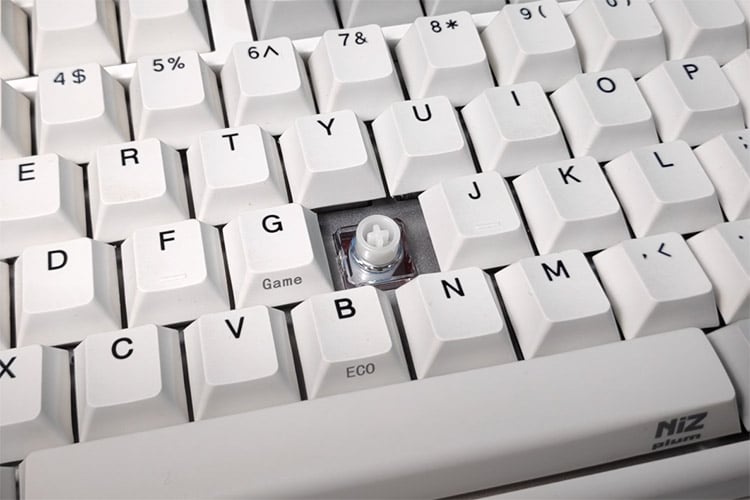
With how effective capacitive keyboards were, IBM decided to keep on manufacturing them. Some of the other models that they produced included the IBM 4704 Model 200, also known as Model F, in 1981. It is called Model F since it uses a capacitive buckling spring where its electrical capacitance is measured through Farad.
Later on, the Japanese company, Topre Corporation, started manufacturing capacitive keyboards. They are now known as one of the leading manufacturers of high-end capacitive keyboards.
What are the Differences between Capacitive Keyboards and Membrane Keyboards?

The membrane keyboard technology is what most consumers are familiar with. The reason for this is because they have become the standard keyboard technology used in most mainstream keyboards since the mid-90s.
Without going into too much detail, membrane keyboards work by utilizing thin sheaths of membrane layers with conductive traces to detect keystrokes. They are not very accurate, nor are they satisfying to type on. However, they are relatively cheap both for the consumer and the manufacturer, which is why they are commonly used.
On the other hand, Capacitive keyboards feature a much more advanced technology that is capable of detecting keystrokes more accurately and producing a more satisfying feel. Capacitive keyboards utilize capacitive switches that have charge detector technology to detect each keystroke.
Of course, the more advanced technology that capacitive keyboards are utilizing usually results in a higher price. And since not a lot of mainstream brands have adopted the capacitive keyboard technology, consumers do not have a lot of keyboard models to choose from. But nevertheless, capacitive keyboards are objectively superior to membrane keyboards.
What are the Differences between Capacitive Keyboards and Mechanical Keyboards?

Capacitive keyboards are often mistaken as mechanical keyboards. This is because both keyboards provide a satisfying typing feel and are leagues ahead of membrane and rubber dome keyboards. However, mechanical keyboards and capacitive keyboards are not the same since they are utilizing different kinds of technology.
As mentioned above, capacitive keyboards use capacitive switches that, when pressed, will change their capacitance in the capacitor pads. In contrast, mechanical keyboards use mechanical switches, which require the physical contact of the two metals.
Mechanical keyboards are more prominent in the market. They come in all varieties that appeal to different kinds of audiences. There are brands that focus solely on gaming keyboards and there are smaller brands that cater to the custom keyboard community.
Capacitive keyboards, on the other hand, aren’t quite as popular. Even enthusiasts who are deep into the world of mechanical keyboards may have never heard of them. Only a handful of brands produce these keyboards, including Topre and Leopold.
With that said, capacitive keyboards have gained lots of followers thanks to their unique feel. The fact that they are not widely available also adds to their appeal. Enthusiasts who have tried them recommend for consumers to at least try them once.
Are Capacitive Keyboards Good For Typing?

Capacitive keyboards are well known for being satisfying to type on. They are miles ahead of the mushy membrane keyboards found on most budget keyboards and provide a different kind of experience than mechanical keyboards.
In addition, since capacitive keyboards are very satisfying to type on, they can help users form good habits and eventually become faster and more efficient at typing. It is similar to mechanical keyboards, which are also well-known for Increasing Typing Speed.
Also, given the fact that capacitive keyboards are accurate, they can significantly lessen any typos. Typists coming from other key switches may need some time getting used to capacitive keyboards due to their unique feel. But once the muscle memory is acquired, it’s all smooth sailing.
Are Capacitive Keyboards Good For Gaming?
Capacitive keyboards aren’t traditionally advertised for gaming. Aside from a few brands, such as Cooler Master, not many gaming brands are utilizing the capacitive key switch technology.
What this means is that there are very few keyboards that have optimized fast response time capacitive switches for gaming. Furthermore, most capacitive keyboards will lack the software features and game integration found on other switches such as mechanical, optical, and analog switches.
In addition, brands such as HHKB are utilizing layouts that are not friendly to gamers. The HHKB layout, in particular, repositions the left control key, making it potentially harder for FPS players who are already used to a standard QWERTY layout for gaming.
But with that said, capacitive keyboards are more than usable for gaming. They are a considerable step above membrane keyboards, which gamers have been tolerating for years.
Gamers may need to retrain their muscle memory, especially since capacitive keyboards feel different than both mechanical keyboards and membrane keyboards. But once the initial adjustment period is done, anyone can comfortably game on capacitive keyboards.
Should You Buy Capacitive Keyboards?
Capacitive keyboards are a must-try for keyboard enthusiasts. They provide a different kind of typing experience and adds a whole new dimension to the keyboard hobby. And while they may not have as many options as custom keyboards or gaming keyboards, there is still a variety of brands and models to choose from.
The only potential barrier for capacitive keyboards is their price point. While most models are reasonably priced, most still require a hefty price tag. Most HHKB keyboards, for instance, can reach up to the $300 price point.
Of course, consumers shouldn’t be rushing out to buy a capacitive keyboard. This is especially true if they have other needs such as gaming-related software, customizability, etc. However, Capacitive keyboards are excellent keyboards for the right people and thus deserve a place in anyone’s keyboard collection.

The KBE team is dedicated to sharing our knowledge and creating useful resources about computer keyboards. This article was written as a team collaboration, combining our knowledge and years of experience using, building and modding keyboards. Meet the team here.
